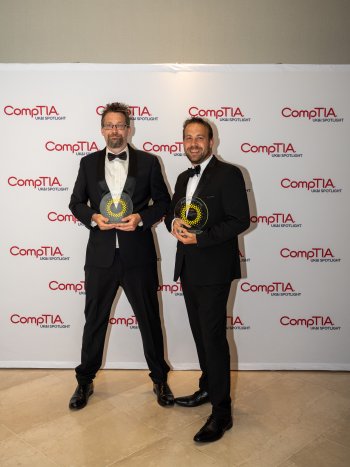IoT Security is a Challenge. Here’s How to Tackle It
- Technology Solutions
- 0 Replies
The Internet of Things (IoT) has revolutionized our daily lives, work environments, and interactions with the world. The IoT network is vast and continuously expanding with over 17 billion connected devices today, ranging from smart home thermostats to complex industrial sensors.
In corporate boardrooms, IoT has become a top-three technology priority. However, as our dependence on these interconnected devices increases, so does the vulnerability of our data and infrastructure. A single compromised device can jeopardize an entire network, underscoring the critical need for robust security measures.
What Does IoT Security Look Like Today?
IoT security today is characterized by rapid growth and escalating risks. The number of connected IoT devices is expected to double by 2030, with forecasts predicting a surge to 25 billion devices by 2027 and around 30 billion by the decade’s end. The International Data Corporation projects that IoT devices will generate nearly 80 zettabytes of data annually by 2025.
However, this technological boom comes with significant challenges. The increasing volume of devices and data generation creates a complex web of connectivity where each new device introduces potential vulnerabilities. In early 2023, there was a 41 percent spike in weekly attacks per organization targeting IoT devices, a concerning trend that has persisted into 2024.
A report by Asimily highlights the gravity of these challenges, noting that routers, which account for 75 percent of IoT device infections, are primary targets due to their critical role in network access. Other frequently attacked devices include security cameras, digital signage systems, medical devices, and industrial control systems.
Common Hurdles in IoT Security
As IoT networks grow, safeguarding sensitive data and maintaining network integrity is crucial. Here are essential strategies to enhance IoT security:
As we continue to integrate IoT devices into our lives and industries, addressing these security challenges is crucial. Robust security measures and industry-wide standards are essential to safeguard our interconnected world.
Read the article: https://builtin.com/articles/iot-security-tackle-it
In corporate boardrooms, IoT has become a top-three technology priority. However, as our dependence on these interconnected devices increases, so does the vulnerability of our data and infrastructure. A single compromised device can jeopardize an entire network, underscoring the critical need for robust security measures.
What Does IoT Security Look Like Today?
IoT security today is characterized by rapid growth and escalating risks. The number of connected IoT devices is expected to double by 2030, with forecasts predicting a surge to 25 billion devices by 2027 and around 30 billion by the decade’s end. The International Data Corporation projects that IoT devices will generate nearly 80 zettabytes of data annually by 2025.
However, this technological boom comes with significant challenges. The increasing volume of devices and data generation creates a complex web of connectivity where each new device introduces potential vulnerabilities. In early 2023, there was a 41 percent spike in weekly attacks per organization targeting IoT devices, a concerning trend that has persisted into 2024.
A report by Asimily highlights the gravity of these challenges, noting that routers, which account for 75 percent of IoT device infections, are primary targets due to their critical role in network access. Other frequently attacked devices include security cameras, digital signage systems, medical devices, and industrial control systems.
Common Hurdles in IoT Security
- Heterogeneous Nature of Devices: IoT devices range from simple sensors to complex industrial machinery with unique hardware and software configurations. This diversity makes it challenging to establish a one-size-fits-all security strategy.
- Expansive Attack Surfaces: The diversity and quantity of IoT devices create a vast attack surface for cybercriminals. This surface expands further when everyday activities involve IoT technology, such as using a mobile device to accept credit card payments.
- Lack of Standardization: The IoT industry lacks unified security standards, resulting in a fragmented ecosystem where devices operate on different protocols and standards. This lack of standardization complicates the implementation of comprehensive security measures.
- Legacy System Vulnerability: Many IoT environments incorporate legacy systems that are not designed with modern cybersecurity threats in mind. These older systems often cannot be updated or patched, making them easy targets for attackers.
- Data Privacy and Integrity: The vast amount of data generated and transmitted by IoT devices poses privacy and data integrity risks. Ensuring the confidentiality, integrity, and availability of this data is paramount. However, the decentralized nature of IoT networks makes it difficult to control access and protect data from interception or alteration.
As IoT networks grow, safeguarding sensitive data and maintaining network integrity is crucial. Here are essential strategies to enhance IoT security:
- Profile Every Device: Gain a comprehensive overview of all connected IoT devices. Use manual discovery or specialized monitoring tools to ensure visibility and effective management.
- Segment Devices: Divide the network into distinct sections to enhance security and performance. Segmentation isolates devices, confining the impact of cyberattacks on compromised segments.
- Implement Zero-Trust Architectures: Adopt a zero-trust model that mandates continuous authentication and authorization. This reduces the risk of unauthorized access and lateral movement within networks.
- Update Software: Regularly update software to address vulnerabilities. Enable automatic updates to ensure timely protection against known threats.
- Perform Anomaly Detection: Continuously monitor for suspicious activities. Implement anomaly detection systems to identify and mitigate potential threats promptly.
As we continue to integrate IoT devices into our lives and industries, addressing these security challenges is crucial. Robust security measures and industry-wide standards are essential to safeguard our interconnected world.
Read the article: https://builtin.com/articles/iot-security-tackle-it
























